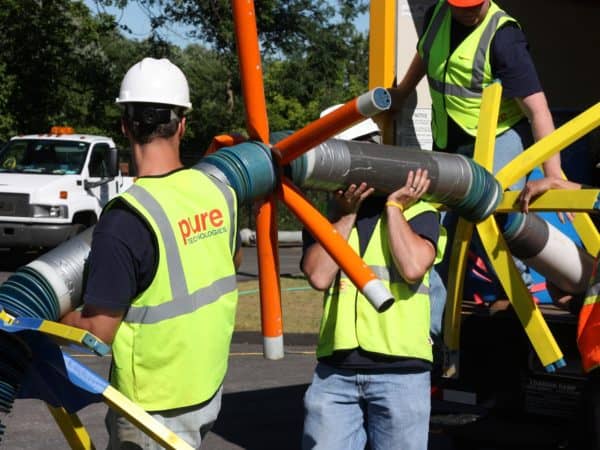Pure Technologies is set up for its next leg of growth, says Bhangui


Pure Technologies’ (Pure Technologies Stock Quote, Chart, News: TSX:PUR) Q3 results are a misleading snapshot that do not tell the longer view of the company, which is much more positive, says Byron Capital analyst Dev Bhangui.
On November 7th, Pure reported its Q3, 2013 results. The company lost $776,000 on revenue of $15.1-million.
Chairman Jamie Paulson was upbeat about the results, and explained why in a note accompanying the results.
“This quarter has traditionally been Pure’s weakest due to seasonal high water usage and other factors,” he said. “Current backlog is over $50-million not including annual recurring revenue from pipeline monitoring, which is over $6-million and growing as new monitoring contracts are initiated. Lastly, oil pipeline inspections have set a new record during the quarter, and this segment is quickly becoming a meaningful contributor to our overall business.”
Bhangui says that while Pure’s Q3 topline missed both his expectation of $15.9-million and the street consensus of $17.1-million, he remains upbeat about its prospects, partly because the company has been successful in introducing new products that he believes will set it up for its next leg of growth. Pure, he says, has gained real momentum in the Magnetic Flux Leakage (MFL) market, an electromagnetic method of detecting corrosion, pitting and wall loss in metallic pipelines.
And Pure’s Smart Ball, a free-swimming leak detection technology that was designed to operate in live large diameter water mains is being adopted by the oil and gas sector, a market that is much larger than water utilities, says Bhangui. The Byron Capital analyst says the high-margin Smart Ball will impact Pure Technologies Q4 revenue materially.
In a research update to clients following its Q3 results, Bhangui reiterated his $6.50 target price on Pure Technologies, but lowered his rating from STRONG BUY to BUY. He says he sees Pure’s revenue growing by more than 25% in the medium term, much higher than its peers, which are divisions of much larger companies, and are growing at an average of 7%.
Nick Waddell
Founder of Cantech Letter
Cantech Letter founder and editor Nick Waddell has lived in five Canadian provinces and is proud of his country's often overlooked contributions to the world of science and technology. Waddell takes a regular shift on the Canadian media circuit, making appearances on CTV, CBC and BNN, and contributing to publications such as Canadian Business and Business Insider.


